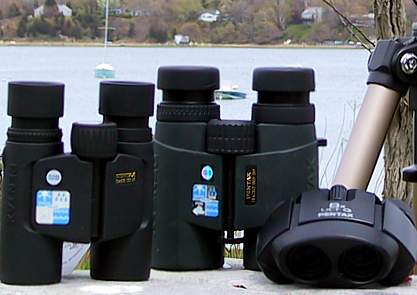
Dear Bird Folks,
Last week you talked about binoculars but did not explain the second number in a pair of 8 x 40 binoculars. Could you explain it this week, because I’ve never understood it?
– Carl, Mashpee
Ok, Carl,
But it ain’t going to be pretty. Get ready to be bored. The second number after the power (after the 8 x) refers to the size of the objective lens (the front lens, not the eyepiece). The bigger the number, the bigger the lens. In this case the “40” equals 40 mm (millimeters). So a pair of binoculars that is 8 x 40 means it has a 40 mm objective lens. An 8 x 25 pair would only have a 25 mm objective lens and thus would be a much smaller binocular.
Many people, in fact just about everybody in the world, seems to think that the bigger the objective lens, the bigger the field of view, and the more you’ll see while looking through the binoculars. But that is wronger than wrong. The field of view is determined in the eyepiece. A large objective lens allows more light to enter your binoculars and that’s about it.
Why would anyone want a bigger objective lens? In poor light bigger binoculars will give you a brighter image, but in normal daylight they really aren’t that much of an advantage. Then it simply becomes a matter of which style fits more comfortably in your hands.
That’s enough of the bino talk for a while, Carl. I hope this helps and thanks for the question. However, I have the feeling that only the MIT tech heads are still reading this. Everyone else has probably turned to yard sale ads.